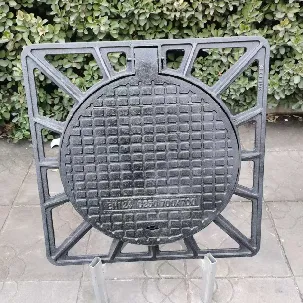3-inch Flanged Butterfly Valve for Efficient Fluid Control Solutions in Industrial Applications
Understanding the 3-Inch Flanged Butterfly Valve
Butterfly valves are critical components in numerous industrial applications, providing efficient flow control in pipelines. Among the various sizes and designs, the 3-inch flanged butterfly valve stands out due to its versatility, simplicity, and effectiveness. This article will explore the key features, applications, benefits, and considerations associated with this specific type of valve.
What is a Butterfly Valve?
A butterfly valve consists of a circular disc or blade that is mounted on a rotating shaft. When the shaft is turned, the disc rotates to either allow or restrict the flow of fluid in a pipeline. The design of the butterfly valve enables quick operations, making it suitable for on/off and throttling service. Flanged butterfly valves are equipped with flanges – raised surfaces with holes for bolts that allow easy mounting to pipelines.
Specifications of the 3-Inch Flanged Butterfly Valve
The 3-inch size refers to the diameter of the valve's end connections, indicating that it is best suited for pipelines with a 3-inch nominal diameter. The flanged connections typically conform to standard specifications such as ANSI, DIN, or JIS, ensuring compatibility with various piping systems.
Materials for butterfly valves can vary greatly, from cast iron and stainless steel to PVC, depending on the application requirements, fluid properties, and pressure ratings. The seals, often made from resilient materials like EPDM or PTFE, provide a leak-tight operation, crucial for maintaining system efficiency and safety.
Applications
3-inch flanged butterfly valves are used across a wide range of industries, including
1. Water Treatment In municipal and industrial water systems, these valves regulate water flow, control reservoir levels, and manage pumping stations.
2. HVAC Systems In heating, ventilation, and air conditioning applications, they help control airflow in duct systems.
3. Chemical Processing The ability to handle corrosive substances with chemically resistant materials makes these valves ideal for the chemical industry.
4. Food and Beverage Sanitary designs with smooth finishes allow for easy cleaning, making them suitable for food processing applications.
5. Power Generation They regulate steam and water flow in various sections of power plants.
Benefits of Using a 3-Inch Flanged Butterfly Valve
3 inch flanged butterfly valve

2. Lightweight Compared to other valve types, such as gate or globe valves, butterfly valves are lightweight, which can reduce the load on piping systems and support structures.
3. Quick Operation They can be fully opened or closed with just a 90-degree turn, making them ideal for applications requiring frequent operation.
4. Cost-Effectiveness Generally, butterfly valves are more economical than many other types, both in terms of initial purchase price and long-term maintenance costs.
5. Versatile Flow Control Depending on the design and installation, they can efficiently handle varying flow rates, making them suitable for throttling applications.
Considerations When Choosing a 3-Inch Flanged Butterfly Valve
When selecting a flanged butterfly valve, consider the following factors
1. Operating Conditions Assess the temperature, pressure, and type of fluid (corrosive, viscous, etc.) to choose appropriate materials and designs.
2. Seal Type Select a seal material compatible with the fluid being transported to avoid leakage and ensure longevity.
3. End Connections Ensure compatibility with existing piping systems, considering factors like alignment and bolt patterns.
4. Regulatory Standards Verify that the valve meets industry standards and certifications necessary for your specific application, especially in critical industries like food and pharmaceuticals.
5. Maintenance Evaluate the ease of maintenance, access for repairs, and availability of replacement parts.
Conclusion
The 3-inch flanged butterfly valve is an essential component in various industrial applications, offering advantages such as compactness, cost-effectiveness, and efficient flow control. Understanding its specifications, benefits, and application nuances can help engineers and procurement professionals make informed decisions. Whether for water treatment, HVAC systems, or chemical processing, selecting the right butterfly valve can significantly enhance operational efficiency and sustainability.
-
The Smarter Choice for Pedestrian AreasNewsJun.30,2025
-
The Gold Standard in Round Drain CoversNewsJun.30,2025
-
The Gold Standard in Manhole Cover SystemsNewsJun.30,2025
-
Superior Drainage Solutions with Premium Gully GratesNewsJun.30,2025
-
Superior Drainage Solutions for Global InfrastructureNewsJun.30,2025
-
Square Manhole Solutions for Modern InfrastructureNewsJun.30,2025
-
Premium Manhole Covers for Modern InfrastructureNewsJun.30,2025
